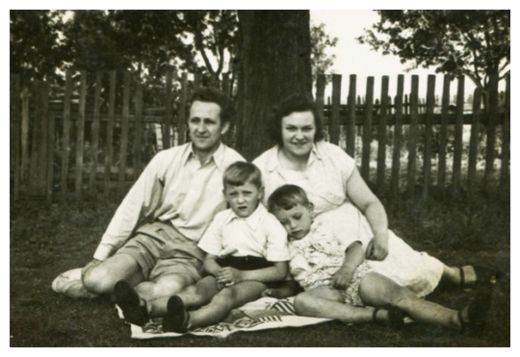
© Thinkstock
The days of a traditional 1950s family where Dad goes off to be the breadwinner and Mom stays home to take care of the kids is long gone, replaced by a "peacock's tail" of various family unit structures, University of Maryland sociologist Philip Cohen claims in a new report prepared for the Council on Contemporary Families (CCF).
In his paper "
Family Diversity is the New Normal for America's Children," Cohen reports that only 22 percent of children currently live in a married male-breadwinner family, while 23 percent are cared for by a single mother. Seven out of every 100 live with a parent cohabitating with an unmarried partner, while six live with either a single father or grandparents.
The single largest group of children (34 percent) lives with dual-earner married parents, the study said, but that group represents just slightly over one-third of the whole. That is a far cry from six decades ago, when 65 percent of all kids under the age of 15 were living with a family of married parents where only the father was part of the workforce.
"Different is the new normal. There hasn't been the collapse of one dominant family structure and the rise of another. It's really a fanning out into all kinds of family structures," Cohen told Brigid Schulte of
The Washington Post on Thursday. "The big story, really, is the decline of marriage. That's what's really changed."
Between the 1950s and 2010, married couple families decreased from two-thirds of all households to just 45 percent, Cohen told Schulte. He said that he was most troubled by the rapid increase in single parenthood, which is often linked with higher poverty levels. A separate study of 11 wealthy nations found that the largest gap in poverty rates between married couples and unmarried mothers was in the US, the
Washington Post added.
Cohen, who used data from the US Census and national surveys on family life to compile his report, told
Live Science Contributor Stephanie Pappas that the American family demonstrated a "peak conformity" in 1960, the year in which the marriage rate was at its highest and the number of multigenerational families living under the same roof was at its lowest.
"That year, 65 percent of children under age 15 lived in a family with married parents in which the father was the breadwinner," Pappas said. "Another 18 percent had married parents who were both employed. Only one child in 350 lived with a mother who had never been married. The vast majority of the single mothers were divorced, widowed or separated, and about 7 percent of children were growing up in those households."
As of two years ago, however, no single family type held a majority, she added. Cohen's report revealed there was an 80 percent chance that two children selected at random in 1960 would be growing up in the exact same type of family structure. By 2012, however, that chance had dipped all the way down to 50 percent, he noted.
"Not only is there no dominant family form, but children experience more transitions in and out of different family arrangements than in the past, and do so through more varied pathways than ever before," the CCF said in a
statement, adding that Cohen argues in his report that "market forces and social reforms following the Great Depression and World War II" were "driving forces" of the phenomenon, "though in surprising ways."
"People are really sort of on their own figuring out how to make their family life work, and that's one reason why you have the huge advice and parenting industry," Cohen told Pappas, adding that the search for role models could help explain why Americans are so interested in celebrity marriages and families. "People get reassurance from conformity. Not that everybody wants to conform with everyone else, but they like a model."
If we could just keep those organizations out of our lives.